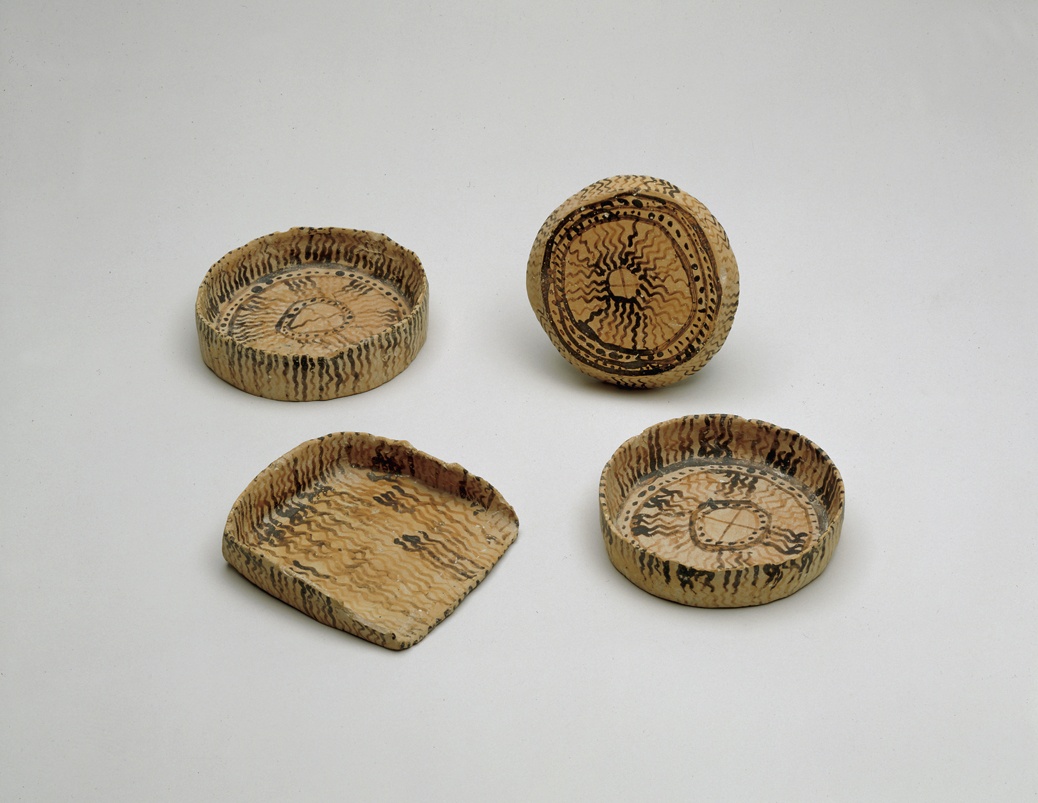
Terracotta
a. "scoop": 11.7 x 10.7 cm. H: 2.9 cm
b. dish: Diam: 12.4 - 12.6 cm. H: 3.2 cm
c. dish: Diam: 11.3 - 11.6 cm. H: 3.0 cm
d. dish: Diam: 10.9 - 11.1 cm. H: 2.2 cm
Provenance: no indication
Boeotian?
7th century B.C.
The set composed of three shallow round dishes and a squarish rectangular "scoop" was handmade with the help of rudimentary tools but without the use of a wheel and the painted decoration applied with a multiple brush.
Condition: slight chips on "scoop" and dishes; the larger dish b. broken in two and repaired.
Such vessels were associated with a ritual context [1] as evidenced for their shape and use by a considerable quantity discovered at the sanctuary of Demeter and Kore on Acrocorinth. The dishes served to hold grain as offering to the goddess. Since these in votive form were always found in threes on trays, it has been suggested that they were connected with the Eleusinian Triad of Demeter, Kore and Triptolemos.
With these dishes were also found "scoops" identified as likna, models of winnowing fans, which have equally come to light on the Athenian Agora [2], as attributes of terracotta female figures.
Painted to imitate basketry, this ensemble seems to fit between Boeotian geometric production and early 6th century terracottas. The decor of multiple wavy lines (a Boeotian characteristic), circles and dots and the way these are applied on a creamy background with brushstrokes in black paint turning to
orange brown due to misfiring indicate the same source or a neighbouring district.
Exhibited and Published:
Art Antique, cat. no. 124 A-C, ill.
1 We are grateful to Ronald S. Stroud who in a letter dated 28 February 1994 confirmed our suggestion and brought our attention to his article The Sanctuary of Demeter and Kore on Acrocorinth. Preliminary Report I: 1961-1962, Hesperia 34, 1965.
2 Thompson, Dorothy B.: Three Centuries of Hellenistic Terracottas. Excavations Athenian Agora, Hesperia 23, 1954, pp. 96-98, 102 (referred to by R.S. Stroud, footnote 1).